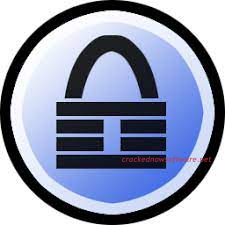Introduction: The Digital Dilemma of the 21st Century
In our modern, digitized world, the act of remembering passwords has arguably become more challenging than recalling birthdays. From social networks to banking, every digital touchpoint demands a unique password. But can we, ensnared in this labyrinth of characters and numbers, find solace? KeePass Password Safe beckons as the beacon of hope. This review delves deep into this acclaimed password manager, unraveling its layers.

Unpacking the Interface: First Impressions and Beyond
At the heart of every software lies its interface – the bridge between user and utility. KeePass, in its essence, is a utilitarian application, and its interface mirrors this sentiment.
- Main Window: Upon launching, you’re greeted with a familiar two-pane setup. The left houses the groups and sub-groups, whereas the right pane lists the entries within the selected group. A toolbar at the top provides quick access to common tasks.
- Entry Creation: Adding new entries is fairly straightforward. One can populate fields such as title, username, password, URL, and notes. The application also sports a built-in password generator, ensuring robustness in password creation.
- Search Functionality: With the potential to house hundreds of entries, the search bar atop becomes an essential tool, rapidly pinpointing the desired entry.
Journeying with KeePass: A Personal Odyssey
Switching to KeePass was more an act of necessity than choice for me. With digital footprints expanding, the old-school methods (think sticky notes and text files) seemed perilously archaic.
The Auto-Type feature quickly emerged as a favorite. It spared me the monotony of copying and pasting credentials. Instead, a simple hotkey auto-filled the required fields on web pages.
However, it wasn’t all smooth sailing. The lack of a built-in cloud sync meant juggling with third-party plugins or manual methods to synchronize the database across devices. Also, the interface, while functional, lacked the modern polish exhibited by some of its contemporaries.
Yet, these drawbacks were eclipsed by the realization of the security KeePass offered. Storing data locally, as opposed to cloud, meant I had complete control over my vault.
System Requirements: Keeping It Light
A notable advantage of KeePass is its minimal system requirements. Designed to be lightweight and efficient, it doesn’t burden systems. Here are the specifics:
- Operating System: Windows 7 or higher for the latest version. However, older versions are compatible with Windows 98 and upwards.
- Memory: 10 MB of free RAM.
- Hard Disk: Approximately 20 MB of free space.
- Framework: .NET Framework 4.7.2 or higher for the latest version.
Moreover, there are unofficial ports available for macOS, Linux, and even mobile operating systems, expanding its reach.

The Grand Verdict: To KeePass or Not?
KeePass Password Safe, in its essence, is a fortress for your passwords. Its emphasis on local storage and AES encryption underlines its commitment to security. The array of plugins available further extends its capabilities, offering functionalities like cloud synchronization, advanced search, and more.
However, it’s not without its shortcomings. The lack of a modern interface and the initial learning curve can deter potential users. Also, for those accustomed to built-in cloud synchronization, KeePass might seem a tad cumbersome.
Yet, in weighing the pros and cons, the scales tip favorably towards KeePass. For those willing to prioritize security over aesthetics, and who can navigate the initial setup, KeePass emerges as an indispensable tool in the age of digital sprawl.
In conclusion, in the grand theatre of password managers, KeePass commands a pivotal role. It might not be the most glamorous actor on stage, but its performance is, without a doubt, stellar.
